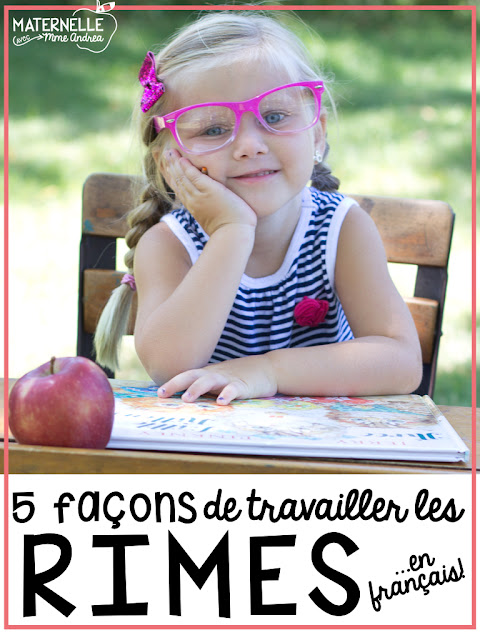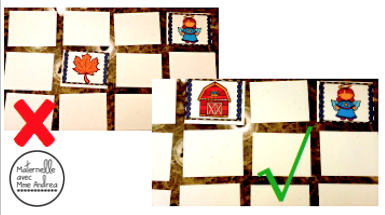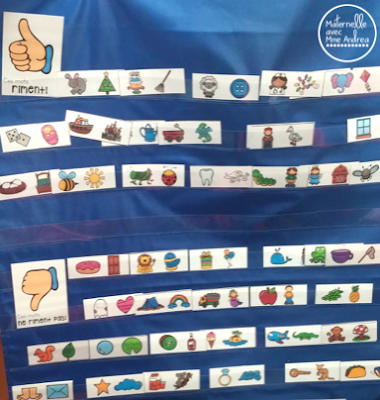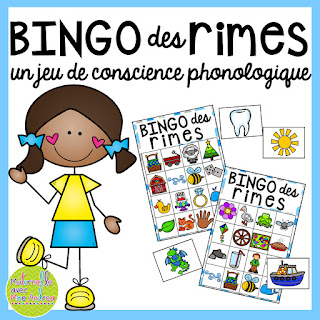Hi! Today I would like to talk to you about rhymes. Rhyming is SUCH an important skill to master, especially for our primary students. But, do you know why rhyming is so crucial to teach and practice in kindergarten?
Read on to find out what it is that makes rhyming such a key aspect of phonemic awareness, as well as five ways that you can starting teaching and practicing rhyming with your students as early as tomorrow!
We all know that rhyming is fun.
When we give children permission to play with words and sounds, invent their own silly, rhyming nonsense words, and just have fun instead of being serious, they become more at ease with the language and more willing to take risks.
Isn’t that what we want most for our second-language students?
Rhyming improves overall language skills in our students, and is a big precursor to learning to both read AND write.
Research shows a correlation between rhyming mastery and future reading preparedness in children, so we definitely want to make sure our students become experts at rhyming, especially if they haven’t had much practice at home!
Rhyming helps teach children how language works.
They begin to understand how to notice and focus on sounds within words – not just sounds at the beginning of words.
This first step to manipulating and playing with words and language also helps students begin to make predictions, when they become able to anticipate which word will come at the end of a rhyming couplet or verse.
So, it’s pretty evident that rhyming is important! Another great thing about rhymes? They are quick and easy to practice – you don’t need a big, long lesson every day.
You can sprinkle quick rhyming activities easily throughout your day!
Here are five ways I love to practice rhyming in my classroom:
1. TALK ABOUT IT
It is important to talk to your students explicitly about what rhyming is. I suggest starting with an anchor chart when you are ready to introduce the concept.
Just make a simple chart with a definition for rhyming – something along the lines of “les mots qui riment terminent avec le même son,” or “les mots qui riment ont le même son à la fin.” Then, provide a few examples, and ask your students if they can think of any others. Draw some rhyming pairs on your anchor chart, and review it often!
You can add more rhyming pairs as your students discover them in books, songs, and poems!
2. BOOKS
Speaking of which, books are a fantastic way to explore rhymes! There are TONS of kids books with rhyming couplets that allow for children to anticipate and predict the next word. One of my favourite things is reading a new book that has rhythm and rhyme and having a student shout out “Hey! It rhymes!!”
I have about a million favourite rhyming books, but one that I can think of off the top of my head is “Dix petits poissons.” It’s a great book to start with, because the words that rhyme are also numbers, so the kids are usually really good at anticipating, even if it is the first rhyming book you ever read to them!
My copy came from Scholastic, and it looks like this:
3. PLAY WITH THEIR NAMES
One of the best parts of rhyming is being silly, and making up nonsense words. One fun way to do this is playing with your students’ names!
I do this all the time when I am handing things out to my students or asking them to line up. Instead of using their real names, I call them a name that rhymes with theirs. So I may say something like, “va te mettre en rang si ton nom rime avec Mogan!” and then Brogan can go line up.
Or, if I am handing out their reading bags, I just call them by a rhyming name, instead of their real name.
If you have a “Chef du jour,” you can also to a circle where each student goes around and says something that rhymes with their names.
You can get them to all try and make a different rhyme, but I am also okay with it if they “copy” another student – they are still rhyming!
This year I have a Kaylee and a Hailey, so it can get confusing sometimes, but we make it work ;)
Another fun, silly thing to do is toss a student’s name into a song that they already know!
For example, if your students know the song Un éléphant qui se balançait, you could sing “Une Isabella qui se balançait/sur une toile, toile, toile, toile d’araignée.”
Her name doesn’t rhyme with anything in the song, but the song still rhymes and it is fun for them to hear their names, and they will listen closely to see if you pick theirs!
4. GAMES, GAMES, GAMES!
You guys know how I feel about games in the classroom already.
Play them as much as you can!! There are TONS of games you can play that involve rhymes. Here are a few ideas!
Memory
I have a set of three rhyming memory games in my TPT store – it’s super simple! Just print, laminate, and cut out the cards, and place them face down. Students turn over two at a time and look for rhyming pairs.
Les mots dans un bateau
This one is a freebie from my Free FRENCH Rhyming Guide!
(If you don’t have a copy of the guide yet, just CLICK HERE, enter your info, and check your email – I’ll send it to you right away.)
Each boat has a target word, and students glue the words that rhyme with the target word into the boat!
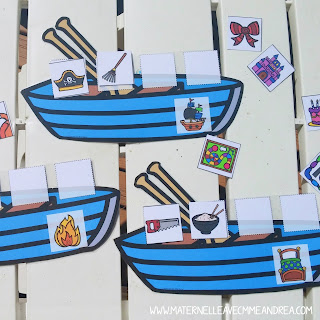
And they are improving – now they usually only make mistakes if they forget what a word actually is haha ;)
Instead of looking for an image that is the same as what the caller draws, students look for an image on their card that rhymes with it.
I have a set of 26 Bingo cards that practice 28 rhyming pairs in my TPT store – CLICK HERE or on the picture below to check it out!
It is a lot easier to identify rhymes than to produce them, and scavenger hunts give students some context for producing rhymes, making it a little easier.
Within your clues, you can either make rhyming couplets and leave the last word (the location of the next clue) out completely, or (if you aren’t a great poet hehe), you can tell your students that the location of the next clue is somewhere that rhymes with “….”
You can use existing songs and poems to practice finding and identifying words that rhyme – I like to make a copy of our weekly comptine for my students’ poetry notebooks and we circle rhyming words together.
Just cover up a few words with a sticky note (the final words of a rhyming couplet or verse), and have students guess (and then check!) which words are missing.
Young students can come up with some hilarious and awesome poetry, especially when you permit them to focus on the oral aspect while you do the physical writing and spelling.


